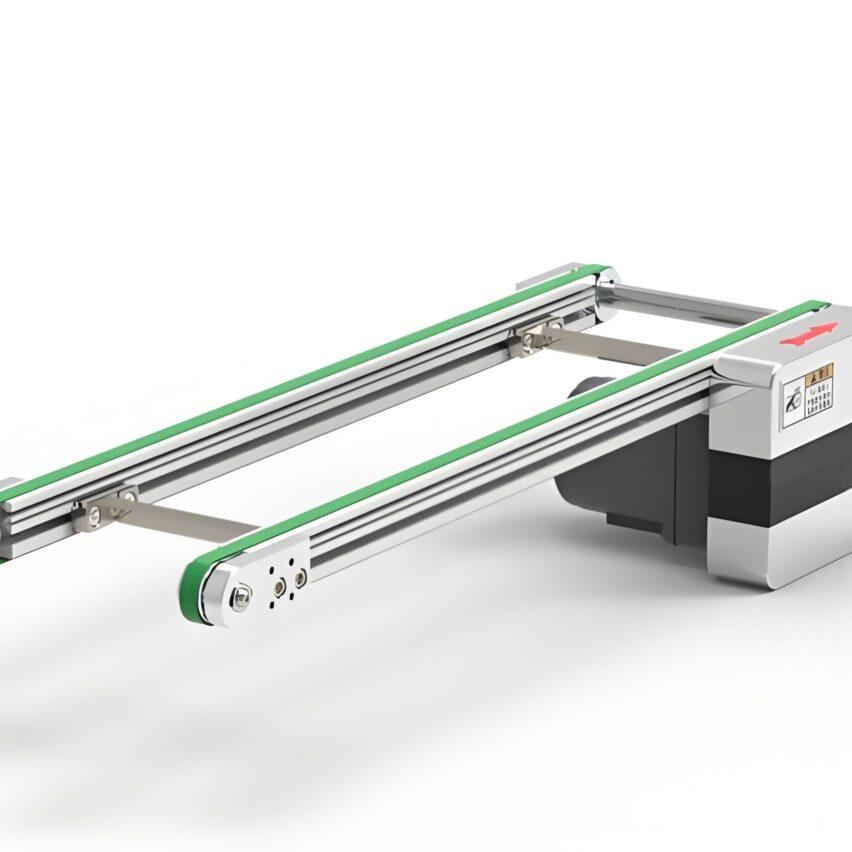Why does your conveyor line always jam? Choose the wrong cam parameters, right? Beginners engaged in roller cam conveyor line, nine out of ten planted in the parameters of the chaotic match - today we will break up the crumbs said, specifically for the selection of busy hands and feet!
I. Parameter matching is a technical job
1. Roller selection set of three
Diameter, length, spacing of these three figures directly determine whether the conveyor line can carry the work. For example, you transport car parts (a single piece of over 200kg), the diameter must be ≥ 76mm to hold up; if you send a small box, 50mm lightweight roller will be enough. The length algorithm is simpler.Roller face width = cargo width + (50~100mm), leave a little leeway to prevent running out of steam.
Pitch calculations are killing me! A common rookie mistake is to row too thinly and end up with goods clunking down the seam. Remember the formula.Roller spacing ≤ 1/3 of the length of the goodsThe motor is not a good idea. For example: 1 metre long wooden box, do not exceed 330mm spacing, if the transport of floppy fabric, but also denser - otherwise the middle of the sagging friction resistance increases, the motor directly strike.
2. Cam mechanism life and death lines
Pressure angle is like walking a tightrope - greater than 20° and you're stuck! When designing, keep an eye on the tangent angle of the contact point, and it's best to get it down to 15° or less. Don't fill in the roller radius.0.8 to 1.2 times the radius of the cam arc.Otherwise you either wear out your skin or you can't carry it at all.
The drive method is more of a matter of taste:
- Chain drive: stable as an old dog when carrying 1 tonne, but noisy!
- Belt drive: the first choice for food factories, silent and without hygienic corners.
- Drum motor: precision assembly line magic weapon, speed error ± 0.5%
Second, these pits step in a car on the turnover
1. Wrong choice of materials
Ever seen a lithium battery production line drum galvanised? Zinc ion contamination directly scraps the battery! Stainless steel or chrome plating is a must for this type of scenario. And low-temperature warehouses - -20°C with PVC rollers? Brittle as a biscuit! Gotta go all steel.
| makings | Applicable Scenarios | Achilles' heel |
|---|---|---|
| galvanised steel | General workshop | Rust wears off quickly in humid environments |
| Stainless steel 316L | Chemical plants/food lines | Three times more expensive than galvanised steel |
| Rubber-coated rollers | Climbing Speed Bit | Dust contamination clean room |
2. Laying out a chain of minefields
Turning radius jerry-rigged? Cargo flies out in minutes!Minimum turning radius ≥ 1.5 times line widthThe conical rollers are also necessary to prevent deflection. The angle of inclination is even worse - some people say "more slope faster", the result is that the box slides into a bowling ball. Gravity ConveyorInclination control at 2-3°Safest, greater than 5° you have to add brake rollers.
Third, the master of the private optimisation techniques
Ask yourself: how do you make a cam more durable?
A: Heat treatment is the lifeblood! Medium load conditions with 40Cr steel surface quenching to 56-60HRC, heavy loads on the decisive 38CrMoAl nitriding treatment, the hardness soared to 67HRC. don't forget to add in the camshaft!Dual channel lubrication system--Like that patented design, lubricant is sprayed directly from the shaft core to the friction surface, extending the life by 3 times.
Ask yourself: How can I save myself from sudden overload?
A: Three tips to stay safe:
- Mechanical insurance: automatic disengagement in case of friction disc clutch slippage
- Electrical protection: current overload relay 0.5 sec cut-off
- Physical interception: Emergency stopping of material by cylinder stoppers
You may be muttering: how can I remember all these parameters? Don't panic! A veteran engineer at an automotive plant's old-fashioned way of doing things--Take cardboard and cut out a 1:10 model.It's more intuitive to fiddle for half an hour than to do the maths for half a day. After all, a conveyor line is a work in progress, not a calculation!
I finally put a word of truth: do not believe that the "universal model", your workshop temperature and humidity change a little, the parameters will have to re-adjust. Before installing the machine must doNo-load + half-load + full-load three-stage testListen to the noise and feel the vibration - you can't fool people with your hands!













